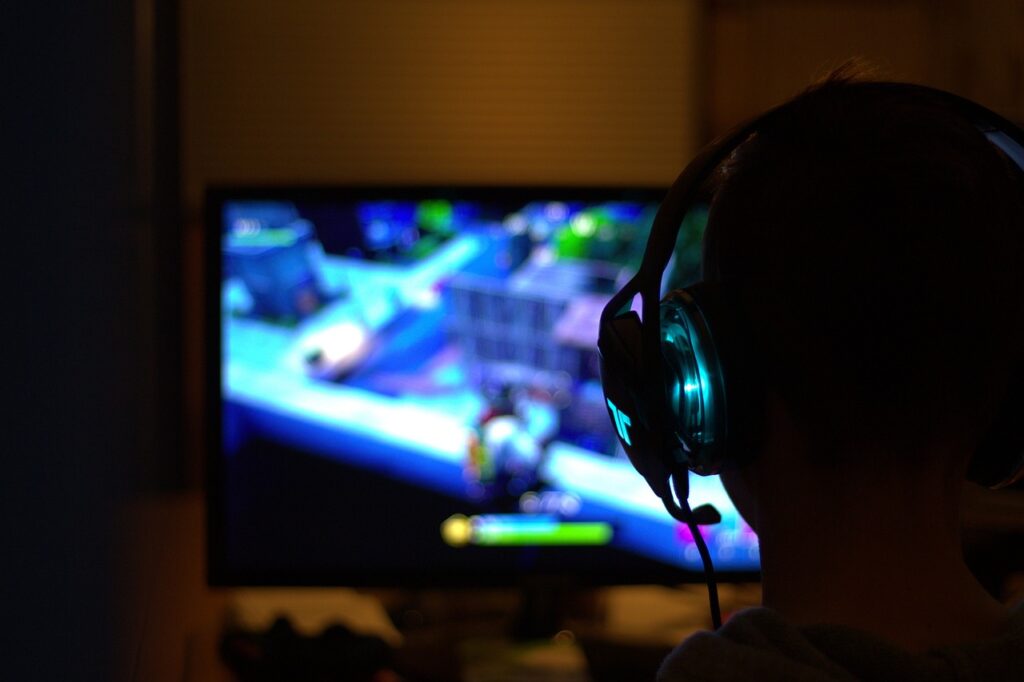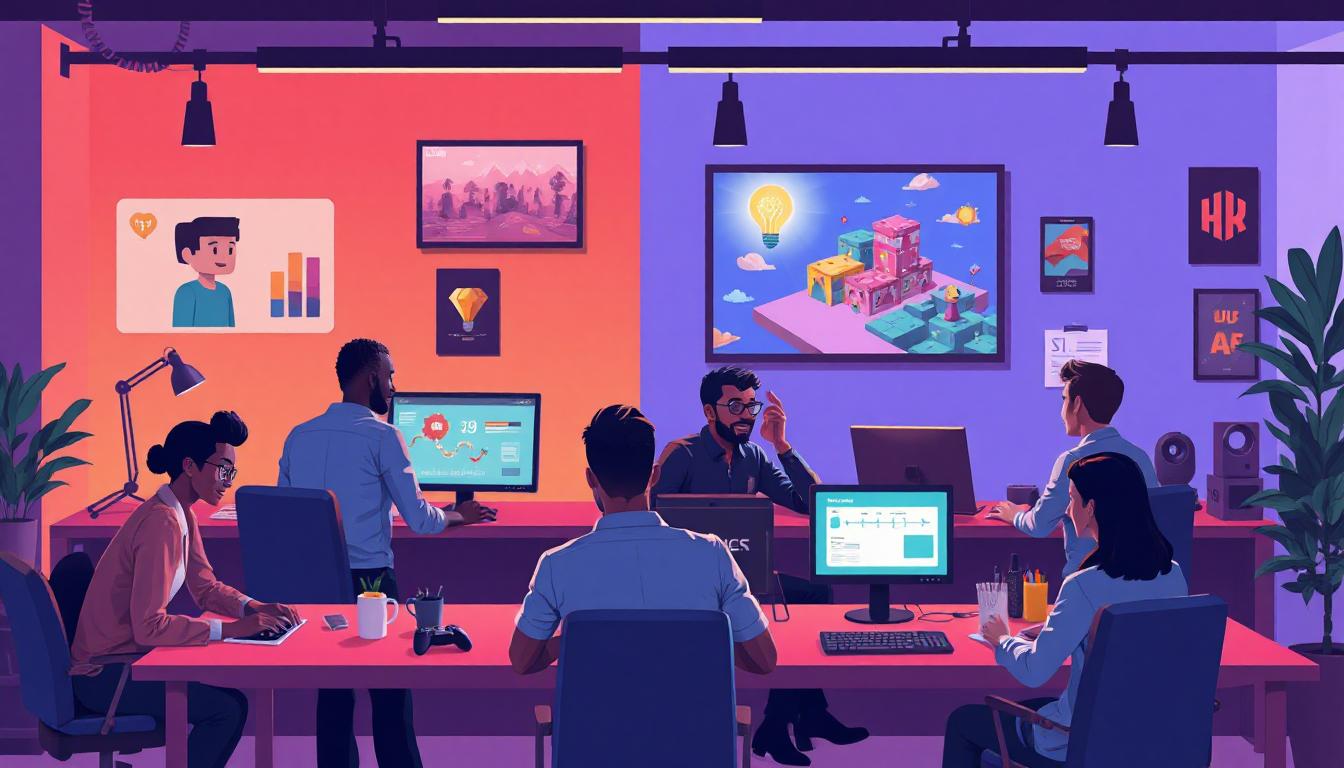
Indie Game Funding: Importance, Methods, and Step-by-Step Guidance
There is no way to avoid engaging with the game funding process and learning how gaming startup funding is possible! No one wants to get involved in this play before figuring out that a minimalistic indie game project costs approximately $10,000. This article discusses the importance of game funding. It then provides an overview of indie game development costs and some European references. Finally, it looks at the steps that should be considered to fund a game. After reading this article, the blurry funding process will become more clear and easier to take. Let’s start with the funds you need to develop your game.
Importance of Indie Game Funding?
As mentioned before in the article “Indie Game Developers’ Intelligent Assistant: How AI is Being Used in Indie Game Development”, indie games are developed in very small teams and they mostly get an innovative and diverse approach to boost the gaming industry. Hence In the first impression, the funding process might seem unnecessary for them. But it is not true. Here are some reasons that come to the table to prove how much gaming funds would be important to develop an indie game:
Development Costs
Doesn’t matter how much your team is and the game you aim to develop is low-cost! Whatever the cost is, developers need to pay for various game development stages including software license, art and audio creation, marketing, etc. So finding an appropriate budget would be inescapable. Without funding, the game development encounters significant obstacles and the process might fail.
Time Investment
Earning more money forces indie game developers to work remotely and part-time while juggling other jobs. Funding makes them able to dedicate themselves to indie game development as much as possible. It efficiently improves the quality of their game and keeps them motivated to go forward with their project. This is another reason that pushes indie game developers to take the game funding process.
Quality Assurance
A well-quality assurance process, including bug fixing, playtesting, refining gameplay mechanics, etc., guarantees the game’s success in the highly competitive game market. To enhance the editing games process, developers need enough budget to invest.
Marketing and Visibility
Game marketing is counted as one of the most complex, important, and expensive stages of the game publishing process. In the article “ Game Marketing Strategy: The Marketing Transformation in the Game Industry” the process of game marketing has been scrutinized. It is not possible to take marketing steps if it has not already specified a budget. Game funding plays a crucial role in handling this process properly. Without a marketing and visibility strategy, you hardly be able to survive in this competitive market.
Creative Freedom
With sufficient game funding, indie game developers safely pursue unique visions without compromising their artistic integrity to appease mainstream publishers. This freedom fosters creativity, leading to innovative gameplay experiences that are the main indie game development mission.
Sustainability and Growth
Successful funding allows developers to create a sustainable business model. This can lead to more ambitious projects in the future, benefiting the gaming ecosystem by continually introducing new ideas and genres.
The Cost of Fund Indie Games
Three factors completely affect the estimated needed funds for an indie game.
- game’s scope
- development team size
- the complexity of the project
Here’s a breakdown of potential expenses involved in funding an indie game:
Development Team Costs
According to many indie game developers’ reports on platforms like Gamasutra and Indie DB, a huge amount of the expenses usually are dedicated to building a development team including salaries for programmers, artists, designers, and sound engineers, etc. A small team may cost anywhere from $20,000 to $150,000 or more, depending on how long the development cycle is and the team’s experience level.
Software and Tools
Development tools can be costly. Look at the prices for licenses on the official websites of software providers like Unity and Unreal Engine.
Game engines (like Unity or Unreal Engine) can range from free to thousand dollars, depending on the features needed. Other expenses may include graphic design software like Blender, audio editing tools like Ableton, and version control systems.
Art and Assets
High-quality graphics, animations, sound effects, and music contribute significantly to the final product’s appeal. According to Game Maker’s Notebook and other resources like IGDA (International Game Developers Association), hiring artists or musicians can cost from $5,000 to over $50,000, depending on the quality and quantity of assets required.
Marketing and Promotion
As mentioned above, marketing in a crazy market is crucial. According to platforms like GamesIndustry.biz, marketing campaigns, attending gaming conventions, or hiring promotional services can run anywhere from $2,000 to $50,000, depending on the marketing strategy.
Distribution and Publishing Costs
If the game is released on platforms like Steam or the PlayStation Store, there may be fees associated with distribution. These can include a one-time fee or a revenue-sharing model, usually taking around 30% of sales.
Other costs might include business registration, legal fees (for copyright/trademark), hardware for testing, and office space if not working remotely. In total, funding an indie game can typically range from $10,000 for a minimalistic project to over $500,000 for a larger, more complex title. Each project will have its unique financial requirements, influenced by the developer’s ambitions and vision for the game.
Game Funding Methods
Recognizing the various methods of game funding leads developers to choose the best ones based on their projects’ essence and the expenses.
Crowdfunding
Platforms like Kickstarter, Indiegogo, and Gamefound allow developers to raise money directly from the gaming community. Developers present their projects, and backers contribute funds in exchange for rewards, such as early access or exclusive content. Successful crowdfunding campaigns can generate significant capital.
Grants and Subsidies
Many governments and organizations offer grants specifically for indie game development. Programs like Creative Europe, the UK Games Fund, and various national film and cultural funds provide financial support without taking equity or requiring repayment. These grants are often aimed at promoting artistic creativity and innovation.
Publishing Deals
Indie developers can partner with publishers who provide funding in exchange for the rights to publish and distribute the game. Publishers often have the resources to support marketing and quality assurance, helping developers reach a wider audience.
Investors and Venture Capital
Indie studios may seek investment from venture capital firms or angel investors who provide capital in exchange for equity. This approach can bring in substantial funding but requires developers to share future profits and decision-making.
Self-funding
Many indie developers finance their games through personal savings or income from side jobs. While this method allows for complete creative control, it carries the risk of financial strain.
Pre-sales and Early Access
Some developers utilize platforms like Steam Early Access to release a game in stages, allowing players to purchase the game before its full release. This approach can generate funding for ongoing development.
Indie games are funded through a combination of community support, government initiatives, private investment, and creative selling strategies, enabling developers to bring their innovative ideas to life.

Step-by-Step Guidance to Get a Fund
Securing funding for an indie game can be a strategic process. Here’s a step-by-step guide to help indie game developers navigate this journey effectively:
Step 1: Identify the Game Concept and Prepare a Game Design Document
Create a clear and engaging concept for your game, outlining its unique mechanics, story, and artistic vision. Prepare a game design document (GDD) that details gameplay, target audience, and potential market positioning.
Step 2: Design a Prototype
Build a playable prototype to demonstrate your game’s core mechanics and visual style. This helps potential funders, whether they are backers or investors, understand your vision and see the game’s potential firsthand.
Step 3: Estimate Needed Funding
Calculate a budget covering development costs (salaries, software, art, marketing) and specify how much funding you require. Assess various funding options to see which aligns with your vision and goals.
Step 4: Search for Funding Options
In the paragraphs above the various game funding methods have been reviewed. After taking primary steps, You need to figure out which one would be the best one for you:
- Crowdfunding
- Grants and Subsidies
- Publishing Deals
- Investors and Venture Capital
- Self-funding
- Pre-sales and Early Access
Step 5: Build a Community
Engage with potential players through social media, forums, and game development communities. Cultivating a following can help drum up support for your funding efforts, especially in crowdfunding.
Step 6: Submit Applications and Launch Campaigns
Once you’ve identified your source of funding, submit grant applications, pitch to investors, or launch your crowdfunding campaign. Communicate your vision, budget, and timelines.
Step 7: Deliver Updates and Build Trust
Regularly update backers or investors on your progress, maintaining transparency and building trust throughout the development process.
By following these steps, indie game developers can effectively secure the necessary funding to bring their creative visions to life.
Q&A
1. Why do indie game developers need to learn more about game funding?
Indie game developers need to understand game funding to secure financial support for their projects, ensure sustainability, and manage resources effectively. Knowledge of funding options, such as crowdfunding and grants, helps them navigate the financial landscape, reducing reliance on personal funds and increasing the chances of successful game development.
2. Which game funding method would be the best one?
The best funding method for indie games often depends on the project’s specific needs and goals. **Crowdfunding** is highly effective for building community support and generating initial capital, while **grants** provide non-repayable funds that foster creativity. **Publishing deals** can offer financial backing and marketing support, making them a strong option for many developers.
3. How to estimate game funding that is needed to pitch a game development project?
Estimate game funding by defining your game concept, creating a project plan with timelines and milestones, determining team requirements and costs, calculating additional expenses (marketing, legal, overhead), and adding a contingency buffer. Summarize these costs to develop a comprehensive budget for your pitch.
Source: Indie Game Development and How to Fund Your Game, Game Funding, How to fund your indie game, How to secure funding for your indie game


